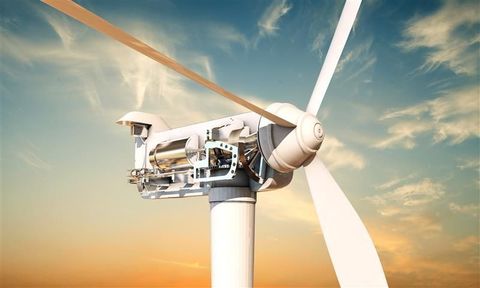Dewatering Equipment Explained: An Essential Guide with Key Details and Insights
Dewatering equipment plays a crucial role in industries where separating water from solids is essential for safe operations, environmental compliance, and efficient material handling. It is widely used in construction, mining, wastewater management, food processing, oil and gas, and large infrastructure projects. This guide explains what dewatering equipment is, why it matters, what has changed recently, how regulations influence its use, and what resources are available today.
Dewatering equipment refers to mechanical and technological systems designed to remove water from soil, sludge, slurry, and industrial materials. The process improves stability, reduces moisture content, and supports easier transportation or further processing.
Common forms of dewatering equipment include:
-
Centrifuges for rapid liquid–solid separation
-
Filter presses for industrial filtration and sludge thickening
-
Belt presses for continuous sludge dewatering
-
Vacuum pumps used in groundwater management
-
Wellpoint systems for construction dewatering
-
Geotextile tubes for large-scale moisture reduction
-
Hydrocyclones for hydraulic separation in mining
These tools exist because excess water can disrupt operations, delay projects, weaken soil, impact safety, and lead to regulatory issues. Dewatering creates stable conditions for construction sites, boosts industrial efficiency, and supports environmental protection.
Importance: Why Dewatering Matters Today
Dewatering plays an important role across multiple sectors because it directly influences safety, environmental management, and operational productivity.
Key reasons why dewatering matters:
-
Improves ground stability
Reducing groundwater levels prevents soil collapse and makes excavation safer. -
Supports environmental compliance
Many industries must manage water discharge responsibly to meet pollution control rules. -
Increases material efficiency
Lower moisture content means better handling of sludge, tailings, or slurry. -
Enhances public safety
Hydrological control reduces flooding risks in construction zones and urban areas. -
Reduces downtime
Water accumulation can halt mining, tunneling, or industrial processes.
Industries that are most affected include:
-
Construction
-
Mining and mineral processing
-
Municipal wastewater treatment
-
Agriculture
-
Oil and gas
-
Industrial manufacturing
Without proper dewatering systems, projects face delays, environmental risks increase, and materials become harder to process.
Recent Updates and Trends
Over the past year, several developments have shaped how dewatering equipment is designed, adopted, and used across sectors.
2024–2025 Trends
-
Expansion of automated monitoring systems
Many industries are integrating AI-based moisture control technology to track water levels in real time, improving accuracy and reducing manual checks. -
Higher use of energy-efficient machinery
Manufacturers are focusing on low-energy centrifuges and advanced filter presses to support sustainability goals. -
Increased adoption of remote-operated groundwater management systems
These systems allow operators to manage pumps and flow rates digitally, improving oversight on large project sites. -
Growth in geotextile dewatering technology
More infrastructure and environmental projects are adopting geotextile tubes due to low maintenance requirements and large-volume handling capacity. -
Stricter environmental discharge norms
Countries are tightening rules related to effluent quality, pushing organizations to adopt advanced industrial filtration and sludge treatment systems.
These trends reflect a growing priority for efficiency, environmental responsibility, and digital monitoring.
Laws and Policies Affecting Dewatering
Regulations strongly influence how and when dewatering equipment can be used. Although rules vary by country, several common policy areas shape the industry.
Environmental Protection Rules
Most governments regulate how extracted water must be treated before being released. Requirements often include:
-
pH control
-
Suspended solids limits
-
Oil and grease restrictions
-
Quality monitoring logs
-
Controlled discharge points
These rules ensure water returning to natural systems meets safety standards.
Construction and Excavation Regulations
Authorities often require:
-
Permits for groundwater extraction
-
Site-specific hydrological assessments
-
Reporting of flow rates
-
Compliance with safe excavation depth guidelines
These policies exist to prevent ground subsidence and flooding.
Wastewater and Sludge Handling Standards
Municipal and industrial projects must:
-
Classify sludge as per local waste categories
-
Follow approved dewatering procedures
-
Maintain equipment certification records
Proper sludge dewatering reduces transportation volume and improves environmental hygiene.
Mining and Industrial Guidelines
Mining regulations typically require:
-
Tailings moisture control
-
Sediment removal systems
-
Runoff management plans
-
Monitoring of settlement ponds
These rules reduce contamination risks in industrial zones.
Tools and Resources for Dewatering
A variety of digital and practical resources help professionals evaluate moisture levels, choose appropriate systems, plan site layouts, and monitor performance.
Useful Tools and Platforms
-
Groundwater level monitoring apps
Used for real-time tracking of excavation water levels. -
Sludge volume calculators
Support planning for industrial filtration and sludge treatment. -
Hydrological modelling software
Helps forecast water inflow in mining, tunneling, and infrastructure projects. -
Material moisture analyzers
Provide quick readings for soil, sludge, or aggregate moisture. -
Environmental regulatory portals
Offer guidance on water discharge standards and reporting formats. -
Online dewatering simulation tools
Used by engineers to visualize pump placement, flow paths, and drainage layouts.
Below is a simple example table summarizing common dewatering tools:
| Tool Type | Purpose | Industry Use |
|---|---|---|
| Moisture Analyzer | Measures water content | Manufacturing, agriculture |
| Flow Meter | Tracks pump discharge | Construction, mining |
| Sludge Calculator | Estimates sludge volume | Wastewater treatment |
| Hydrology Software | Predicts water inflow | Tunneling, excavation |
| Monitoring App | Real-time water levels | Infrastructure projects |
These tools support better planning, safer execution, and more accurate moisture control.
FAQs
1. What is the main purpose of dewatering equipment?
The main purpose is to remove excess water from soil, sludge, or industrial materials to improve stability, ensure safe operations, and support environmental compliance.
2. Where is dewatering most commonly used?
Dewatering is widely used in construction sites, mining operations, wastewater treatment plants, industrial facilities, and environmental remediation projects.
3. What factors determine which dewatering method should be used?
Factors include soil type, project size, groundwater level, sludge composition, discharge regulations, and available space for equipment placement.
4. Is dewatering a permanent or temporary solution?
Most dewatering processes are temporary and used during excavation or material processing. Some systems, such as long-term groundwater management, may operate continuously depending on project requirements.
5. Are specific permits required for dewatering activities?
Many regions require permits to extract groundwater or discharge treated water. Requirements depend on local environmental and construction regulations.
Conclusion
Dewatering equipment plays an essential role in industries that rely on stable ground conditions, efficient sludge handling, and responsible water management. With advances in digital monitoring, filtration technology, and environmental standards, the field is becoming more efficient, precise, and regulated. Understanding the purpose, trends, tools, and regulatory framework of dewatering helps organizations make informed decisions that support safety, environmental protection, and operational reliability.
This guide provides a clear and practical overview for anyone seeking foundational knowledge on dewatering equipment and its importance in today’s industrial and infrastructure landscape.




